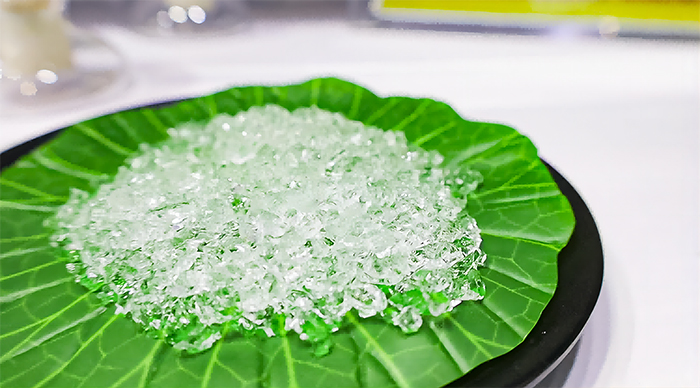Super Absorbent Polymers, also known as SAP, hydrogel, absorbent polymers, absorbent gels, water retaining agent, super slurpers, water gel, is a new type of macro molecular synthetic water absorbing polymer material. It has a water uptake potential as high as 100,000% of its own weight in a short period of time by osmosis and form granules in soil to enhance soil properties. SAPs are generally white sugar-like hygroscopic materials that swell in water to form a clear gel made of separate individual particles and can retain moisture even under pressure without risk of conflagration or rupturing/blasting.

Super Absorbent Polymers used in agriculture are mostly prepared from acrylic acids and a cross-linking agent like potassium by solution or suspension polymerization. The polymer so formed is called a polyacrylate whose swelling capacity and gel modulus depends greatly on the quantity and type of cross-linker used. Polyacrylates are non-toxic, non-irritating and non-corrosive in nature and tested to be biodegradable with a degradation rate of 10%-15% per year. They demonstrate high water absorbance potential and can freely release 95% of the same under suction pressure by plant roots.
The three most common soil conditions that hinder plant growth and crop yield are low water retention capability, high evapo-transpiration rate and soil moisture leaching. Apart from these, factors like unforeseen drought conditions, degradation and salination, overuse of synthetic fertilizers and pesticides and improper irrigation practices severely affect soil and plants, often rendering permanent damage to soil biota as well.
● High absorption capacity in saline and hard water conditions
● Pptimized absorbency under load (AUL)
● Lowest soluble content and residual monomer
● Low price
● High durability and stability in the swelling environment and during storage
● Gradual biodegradability without formation of toxic species
● pH‐neutrality after swelling in water
● Photostability
● Re‐wetting capability
● Improves soil quality, preserves water and resists drought stress
● Increases seed sprouting and seedling development leading to better farm success
● From the environmental aspects, it is non-polluting and biodegradable, helps in reducing irrigation frequency and water consumption and creates a simple cyclic process to provide water directly to roots and prevent soil compaction.
● In agriculture and agroforestry, SAPs act as micro water reservoirs at plant roots. They absorb natural and supplied water 400-500 times their own weight and release it slowly on account of root capillary suction mechanism thus preventing water loss in soil by leaching and evaporation.
● SAPs form a consistent cyclic process of absorption and release of water; the water so released can provide optimum moisture for quick germination and seedling maturation. Thus it reduces seedling mortality by several folds in nurseries.
● In cold regions, death during germination and maturation is common due to moisture freezing in & around plant root tissue. Absorbed moisture in hydrogels does not freeze and makes easy accessibility to plants. It also regulates seedling growth temperature preventing death by freezing.
● SAPs can help save water and labor by reducing irrigation frequency, help overcome drought conditions and act as soil conditioners, prevent leaching in sandy soils, runoffs in mountainous and sloping fields, improve virescence efficiency and restore soil biota.
● SAPs can reduce overuse of fertilizers and pesticides in fields. The chemicals so absorbed with water are slowly released thus extending the operational life and uptake efficacy by root systems.
● SAPs act as soil matter flocculants. They closely bind loose soil thus forming loams that can help better root latching. Simultaneously, the repeated absorb-release mechanism prevents over compaction of soil minerals and provides space for aeration and development of soil edaphon.
● It has a wide area of application ranging from agriculture, forestry, industrial planting, municipal gardening, drought management, water conservation, It helps reduce soil erosion by surface run-offs, fertilizer and pesticide leaching to ground water, reducing cost of water and irrigation and success rate at growth and high yields of crops.